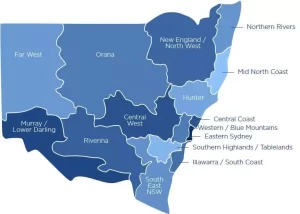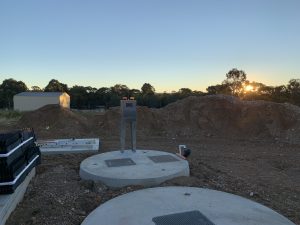Wastewater management is a critical aspect of environmental sustainability, especially in densely populated areas like New South Wales (NSW), Australia. Proper wastewater solutions not only protect public health but also preserve the integrity of our natural resources. However, obtaining approval for wastewater systems through NSW councils can be a complex process. In this blog, we’ll explore wastewater solutions and provide insights into the application process through NSW councils.
Understanding Wastewater Solutions: Wastewater, often referred to as sewage, is water that has been used in various domestic, commercial, and industrial activities. Wastewater contains contaminants and pollutants that can harm the environment if not properly treated. Wastewater solutions encompass a range of technologies and systems designed to treat and dispose of wastewater safely and effectively.
Common wastewater solutions include:
- Septic Systems: On-site wastewater treatment systems that collect, treat, and disperse wastewater underground.
- Aerated Wastewater Treatment Systems (AWTS): Advanced systems that use aeration and biological processes to treat wastewater.
- Sewerage Connections: Connection to centralized sewerage systems for treatment by local authorities.
The choice of wastewater solution depends on factors such as property size, location, soil type, and regulatory requirements.
Application Process Through NSW Councils: Obtaining approval for wastewater systems in NSW typically involves the following steps:
- Preliminary Assessment: Before installing a wastewater system, property owners must conduct a preliminary assessment to determine the most suitable solution. This may involve soil testing, site inspections, and consultation with wastewater professionals.
- Development Application (DA): Once a wastewater solution has been chosen, property owners must submit a development application to the relevant NSW council. The DA includes detailed plans, specifications, and assessments of the proposed wastewater system.
- Council Review: The council reviews the DA to ensure compliance with local planning regulations, environmental standards, and health requirements. This may involve assessing the environmental impact, site suitability, and proximity to water bodies.
- Public Notification: In some cases, the council may require public notification of the proposed wastewater system. This allows neighboring residents and stakeholders to provide feedback or raise concerns about the project.
- Approval and Conditions: If the council is satisfied with the DA, they grant approval for the wastewater system installation. Approval may be subject to certain conditions, such as regular maintenance, monitoring, and compliance with relevant standards.
- Installation and Compliance: Once approval is obtained, property owners can proceed with installing the wastewater system. It’s essential to adhere to the approved plans and specifications to ensure compliance with council requirements.
- Final Inspection: After installation, the council conducts a final inspection to verify that the wastewater system meets regulatory standards and conditions of approval.
- Ongoing Compliance: Property owners are responsible for maintaining and operating the wastewater system in accordance with council regulations. This may include regular servicing, monitoring, and reporting to ensure ongoing compliance.
Navigating the application process for wastewater solutions through NSW councils requires careful planning, thorough documentation, and adherence to regulatory requirements. By understanding the steps involved and working closely with council authorities and wastewater professionals, property owners can obtain approval for sustainable wastewater systems that protect public health and the environment.
If you’re considering installing a wastewater system in NSW, be sure to consult with experienced professionals and follow the prescribed application process for a smooth and successful outcome.
Related Posts
- What Are The Benefits Of Wastewater Treatment?
- What Is A Pump Station or Pump Well?
- All You Need to Know About Septic Tanks in Sydney
- How does Wastewater and Greywater differ?
- How do aerated wastewater treatment systems work
- How Do Grey Water Recycling Systems Work
- Why Use A Concrete Septic Tank?
- What Is Commercial Wastewater?






